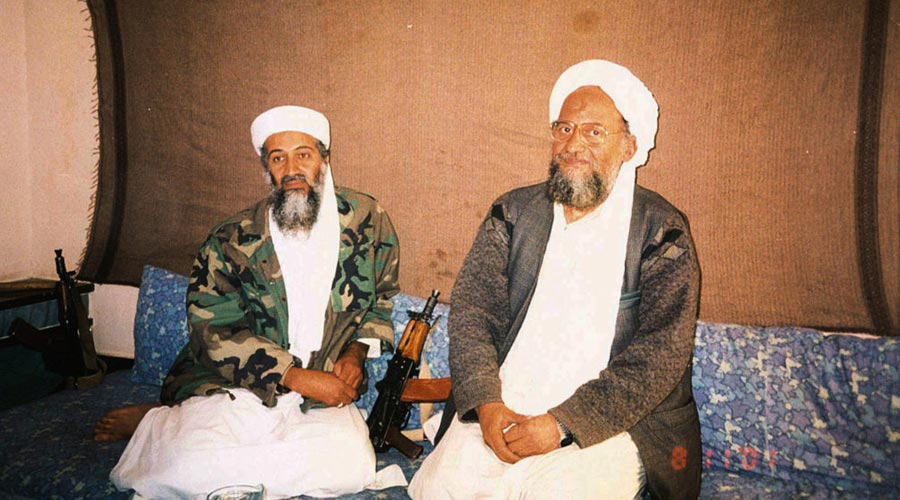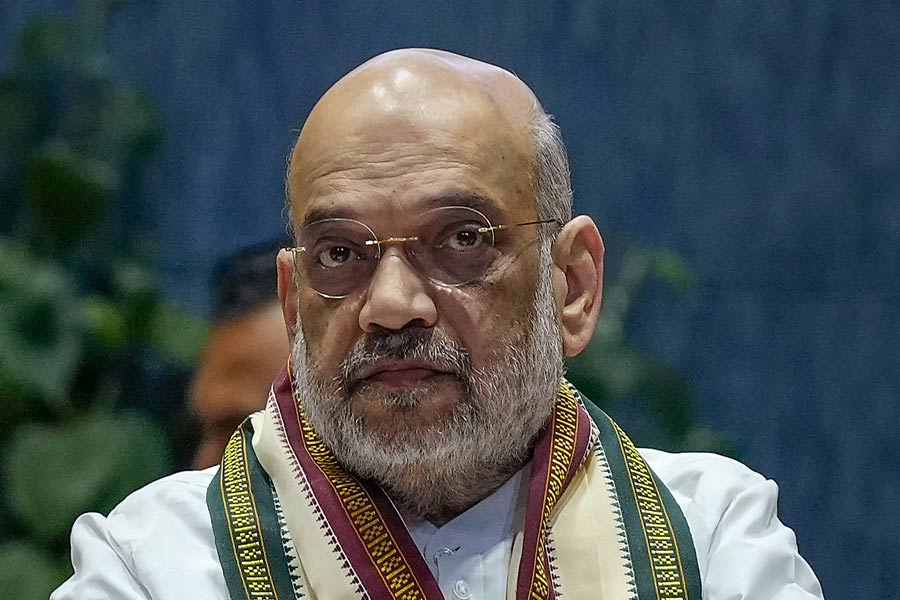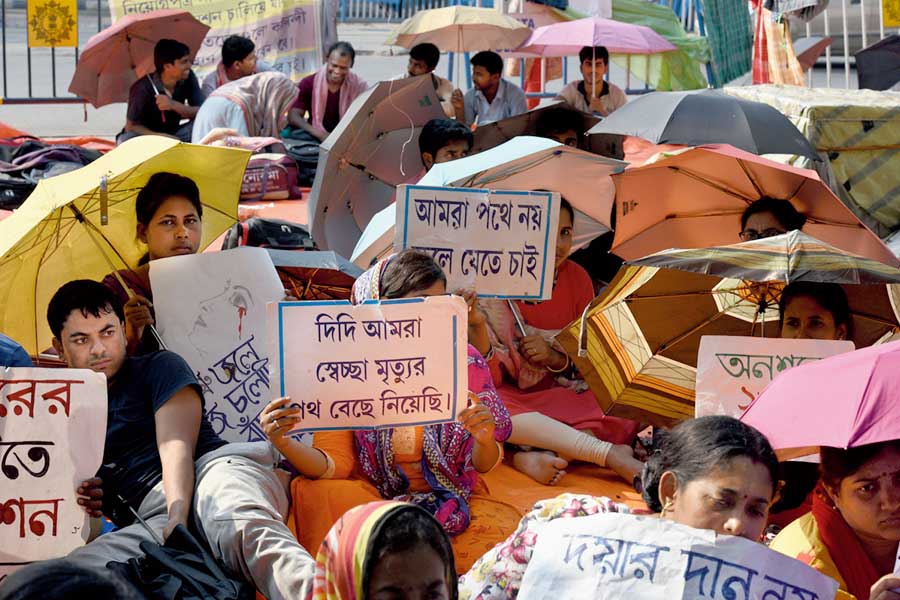Ayman al-Zawahiri, the Al Qaeda leader, responsible for the 9/11 and many more terror attacks, was killed by a US drone strike in Afghanistan. This was not the first time that the US had set out to kill the terrorist. In 2006, he was the target of a US missile strike near the Pakistan-Afghanistan border. However, Zawahiri survived the attack. According to the U.S officials, the recent drone attack took place on Sunday by the Central Intelligence Agency (CIA) in the Afghan capital Kabul. Who was Ayman al-Zawahiri?
-
Ayman al-Zawahiri was born in Cairo, Egypt in 1951. He belonged to a respectable family of scholars and doctors. His grandfather was the grand imam of al-Azhar, the centre of Sunni Islamic learning in the Middle East, while one of his uncles was the first secretary-general of the Arab League.
-
While still at school, Zawahiri became interested in political Islam, reports the BBC. At the age of 15, he became a member of the Egypt’s oldest, largest and outlawed Muslim Brotherhood for which he was arrested later. As per family tradition, he became an Egyptian doctor and set up a medical clinic in Cairo.
-
Zawahiri had a very radical extremist mindset since he was a teenager. This is why he was attracted to Islamist groups trying to overthrow of the Egyptian government. He joined the Egyptian Islamic Jihad militant group in 1973.
Ayman al-Zawahiri was born in Cairo, Egypt in 1951. He belonged to a respectable family of scholars and doctors. His grandfather was the grand imam of al-Azhar, the centre of Sunni Islamic learning in the Middle East, while one of his uncles was the first secretary-general of the Arab League.
While still at school, Zawahiri became interested in political Islam, reports the BBC. At the age of 15, he became a member of the Egypt’s oldest, largest and outlawed Muslim Brotherhood for which he was arrested later. As per family tradition, he became an Egyptian doctor and set up a medical clinic in Cairo.
Zawahiri had a very radical extremist mindset since he was a teenager. This is why he was attracted to Islamist groups trying to overthrow of the Egyptian government. He joined the Egyptian Islamic Jihad militant group in 1973.

1998 US embassy bombings in Kenya Twitter/ @t_mcconnell
-
Zawahiri was put behind bars in the 1980s for his involvement in militant Islam. He was suspected to be involved in the assasination of President Anwar Sadat but later cleared. However, he was convicted of the illegal possession of arms.
-
According to fellow Islamist inmates, jail authorities tourtured and brutaly punished Zawahirir. This experience seems to have transformed him into a violent extremist.
-
After his release in 1985, he left Egypt and became involved in jihadist movements of international nature. Zawahiri settled in Afghanistan and formed a faction of the Egyptian Islamic Jihad militant group. He was also working as a doctor in the country.
-
In 1993, Zawahiri became the leader of Islamic Jihad. The group carried out a series of attacks against the Egyptian government, most notably, the former Prime Minister of Egypt, Atif Sidqi. Zawahiri was considered to be the key figure behind such attacks.
-
In the 1990s, the Islamic Jihad’s aim to set up an Islamic state in Egypt and topple the government, killed more than 1200 citizens.
-
In 1997, the US state department named him as leader of the Vanguards of Conquest group - a faction of Islamic Jihad thought to have been behind the Luxor massacre.
Zawahiri was put behind bars in the 1980s for his involvement in militant Islam. He was suspected to be involved in the assasination of President Anwar Sadat but later cleared. However, he was convicted of the illegal possession of arms.
According to fellow Islamist inmates, jail authorities tourtured and brutaly punished Zawahirir. This experience seems to have transformed him into a violent extremist.
After his release in 1985, he left Egypt and became involved in jihadist movements of international nature. Zawahiri settled in Afghanistan and formed a faction of the Egyptian Islamic Jihad militant group. He was also working as a doctor in the country.
In 1993, Zawahiri became the leader of Islamic Jihad. The group carried out a series of attacks against the Egyptian government, most notably, the former Prime Minister of Egypt, Atif Sidqi. Zawahiri was considered to be the key figure behind such attacks.
In the 1990s, the Islamic Jihad’s aim to set up an Islamic state in Egypt and topple the government, killed more than 1200 citizens.
In 1997, the US state department named him as leader of the Vanguards of Conquest group - a faction of Islamic Jihad thought to have been behind the Luxor massacre.

9/11 attack, 2001 File image
-
In 1998, he joined hands with Osama Bin Laden, then leader of Pan-Islamic militant organization Al-Qaeda. He was considered by most to be an influential leader who helped Laden achieve his goals, according to The New York Times. He was Al Qaeda’s chief operating officer.
-
Zawahiri was responsible for the 1998 US embassy bombings in Kenya and Tanzania in which 223 people were killed.
-
Laden and al-Zawahiri were the mastermind behind the 9/11 attacks against the United States in 2001.
-
After Bin Laden was killed in an air strike by the US in May 2011, al-Zawahiri took over the leadership of the terror group. Laden’s successor was No. 2 in the list of “most wanted terrorists” announced by the US government in 2001. He had a $25m (£16m) bounty on his head.
In 1998, he joined hands with Osama Bin Laden, then leader of Pan-Islamic militant organization Al-Qaeda. He was considered by most to be an influential leader who helped Laden achieve his goals, according to The New York Times. He was Al Qaeda’s chief operating officer.
Zawahiri was responsible for the 1998 US embassy bombings in Kenya and Tanzania in which 223 people were killed.
Laden and al-Zawahiri were the mastermind behind the 9/11 attacks against the United States in 2001.
After Bin Laden was killed in an air strike by the US in May 2011, al-Zawahiri took over the leadership of the terror group. Laden’s successor was No. 2 in the list of “most wanted terrorists” announced by the US government in 2001. He had a $25m (£16m) bounty on his head.










